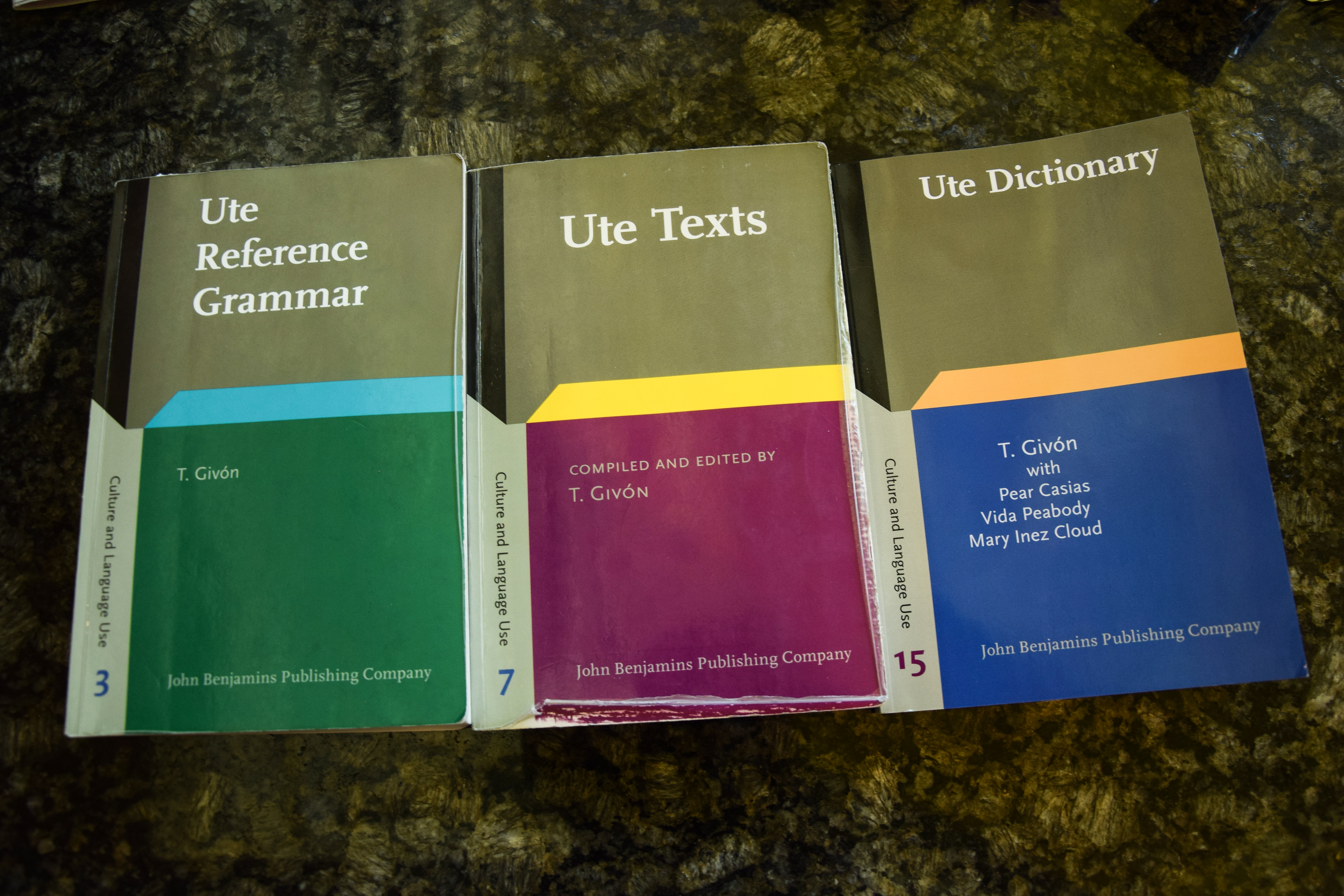Southern Ute tribal members can now tighten their Ute language skills through the newly published Ute Dictionary, a project that has been in development for over 35 years by Tom Givon and Southern Ute collaborators.
The publication of the revised and expanded Ute Dictionary marks the completion of a grand revision of the three Ute language books: the Ute Reference Grammar (published 2011; originally 1980), the Ute Texts (published 2013; originally 1985), and now the Dictionary (originally 1979).
“Language is about speaking it, and these are the words the Ute people used,” said writer Tom Givon. “Around 1975 I saw an article in the Pagosa Springs paper that said the Utes were trying to preserve their language. At the time, the Southern Ute Indian Tribe asked Fort Lewis College to host Ute language classes. After being granted funding, the Ute Dictionary Committee, as we called ourselves, was able to start putting it together. My collaborators were important and distinguished what the words meant.”
Givon, originally from Spain, attended school in California before moving to the Four Corners where he continues to be enlightened by the history and heritage.
In the development process, Givon met with tribal members Pearl Casias, Vida Peabody, Mary Inez Cloud, and Georgia McKinley who all provided a helping hand in creating the textbooks.
“It was destiny I came here, and I was blessed to work with the people in this community,” he said. “Once you see the environment here, you know there’s nothing more beautiful.”
The Ute Dictionary includes several introductory chapters that link the words to the Ute sound system and alphabet, the grammar of word-usage, the derivation of new words from existing ones, and a detailed guidance to the structure of the dictionary. While the three books are written primarily as language description, they form the basis for the writing of language teaching materials.
“We are very happy to get this out to our tribal members,” said tribal elder Pearl Casias, who collaborated with Givon on making the dictionary a success. “Our language is who we are as tribal people. It’s historic for us, and we must do what we can to keep it preserved.”
“It was a privilege to work with people who love their heritage and traditional stories,” Givon added. “These stories are the Homer of the Ute tradition. It’s good that people from around this are introduced to the Ute’s heritage. Durango is 20 miles from Ignacio, but it’s 100 years away.”
A presentation about the release of the new Ute Dictionary will be hosted by Givon and Casias at the Ignacio Community Library on Thursday, June 16 at 5:30 p.m. Tribal members can obtain a copy of the three from the Culture Department.

